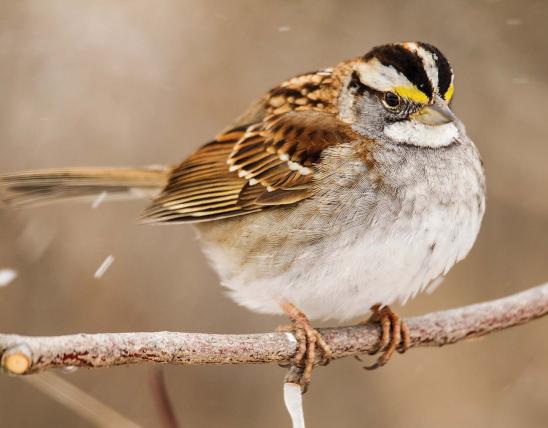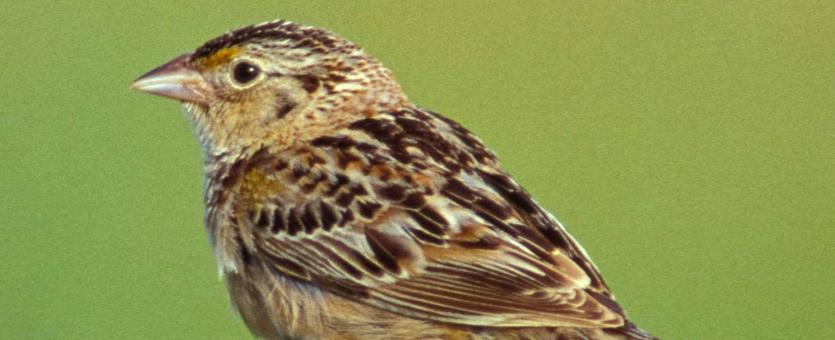
Adult upperparts of the grasshopper sparrow are streaked with black, tan, and brown, with a brown crown having a narrow pale central crown stripe. The cheeks are tan, with a fine dark eye line extending back from the eye. The dark eye with its white eye ring usually stands out on the buffy cheek. On close inspection the area above and in front of the eye is often yellow. Underparts are clear buff, except in juveniles, which have a dark, streaked “necklace” on the upper breast. Males sing their high-pitched songs from low perches. The song usually consists of 2 or 3 short notes followed by a squeaky, buzzy trill: sip-sip, tuhzeeeeee. It sounds a lot like a grasshopper’s call. Another song type is a squeaky jumble of notes, similar to a male hummingbird’s song.
Similar species: First, separate this species from many other sparrows by grassland habitat preference. Henslow’s sparrow, also found in prairies, is commonly confused with the grasshopper sparrow, but it has streaks on the breast, a greenish head and nape, and two dark stripes running down the side of the face from the mouth. Le Conte’s sparrow has a buffy or orangish eyebrow and a gray ear patch; it is rarely seen here in the summer. Other sparrows that might be confused with it have streaks on the chest.
Length: 5 inches.
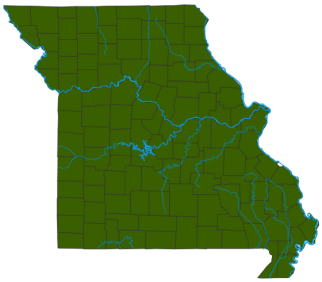
Statewide.
Habitat and Conservation
Upland pastures, hay fields, prairies, and other dry grasslands. Both grasshopper and Henslow’s sparrows live in open grassland during the summer. But within that habitat type, they each have a preferred habitat subtype: Grasshopper sparrows prefer the drier uplands in short- to medium-high grasslands. Henslow’s sparrows prefer less dry, medium-high to tall grasslands that have a 2–3 year accumulation of grass thatch from previous growing seasons. Grasshopper sparrows occur in most types of grasslands, but the Henslow’s seems to prefer native prairie or diverse, nonfescue grasslands.
Food
Forages on the ground for insects (particularly grasshoppers) and seeds. Not a regular visitor at bird feeders. Favorite foraging spots are places where the ground is bare, allowing the sparrow to grasp grasshoppers by the midsection. When feeding grasshoppers to its young, the parent sparrow first removes the insect’s legs, making it a manageable meal.
Status
As a summer breeding resident, common but local; rare in southeast Missouri; as a winter resident, accidental. The species has been declining since the 1960s, mostly because of loss, degradation, and fragmentation of suitable habitat. Conversion of native grasslands to cattle pasture is one example. There are 12 subspecies of grasshopper sparrows, ranging from North America, Central America, and the Caribbean. One of the four North American subspecies, the Florida grasshopper sparrow, is endangered, with only about 150 individuals left in the wild. Conservationists are hoping to use captive breeding to keep it from becoming extinct.
Life Cycle
Present in Missouri April through September. Nests are constructed on the ground; they are made of grasses and are hard to see. A canopy of grasses overhangs the open-cup nest, which the birds enter from the side. A clutch comprises 3–6 eggs, which are incubated by the mother for 11 or 12 days. They begin to leave the nest after another 9 days. Overwintering range includes the Gulf Coast states, Mexico, and Cuba. Grasshopper sparrows can live for at least 9 years, but 3 years is more typical.
Human Connections
Many people visit prairies in order to enjoy and photograph the diversity of wildflowers, but the songs of insects and of birds such as the grasshopper sparrow, Henslow’s sparrow, dickcissel, and eastern meadowlark are also a big part of the joy.
Ecosystem Connections
Grasshopper sparrows play a role in limiting the populations of the insects they eat. Like most ground-nesting birds, many of their eggs and young must end up as food for predators ranging from snakes to raccoons to other birds and more.

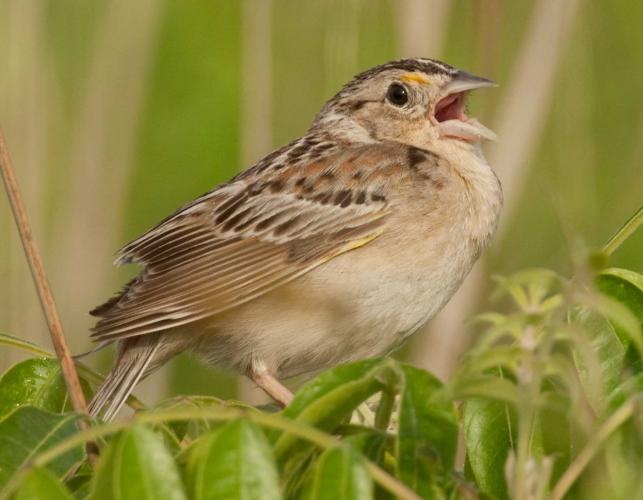
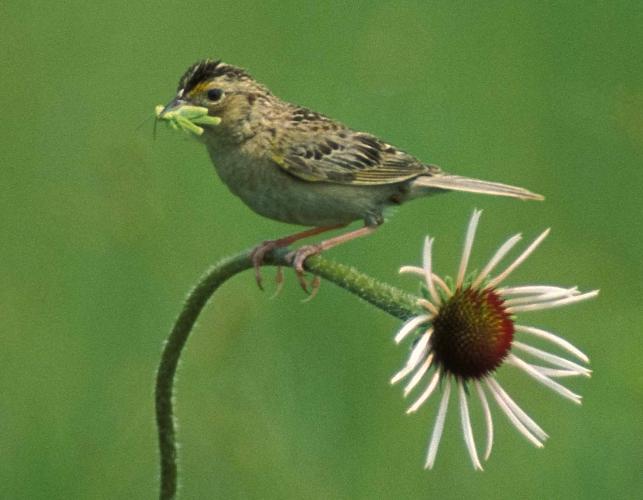





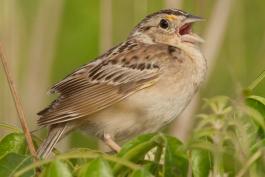
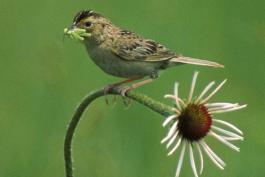
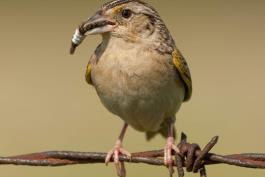

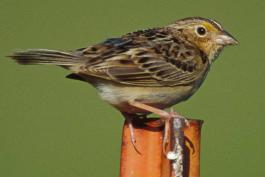

About 350 species of birds are likely to be seen in Missouri, though nearly 400 have been recorded within our borders. Most people know a bird when they see one — it has feathers, wings, and a bill. Birds are warm-blooded, and most species can fly. Many migrate hundreds or thousands of miles. Birds lay hard-shelled eggs (often in a nest), and the parents care for the young. Many communicate with songs and calls.


























